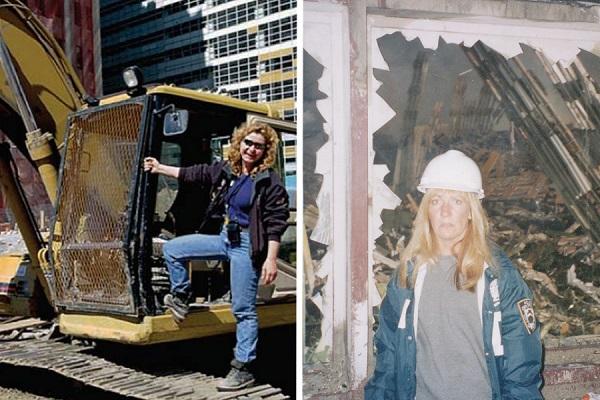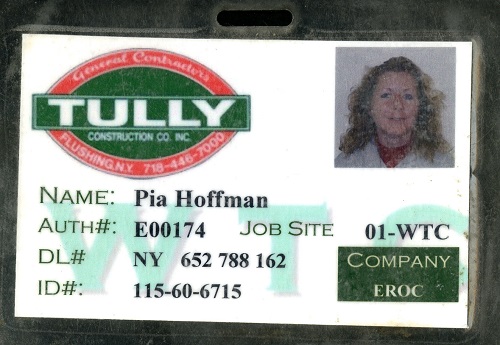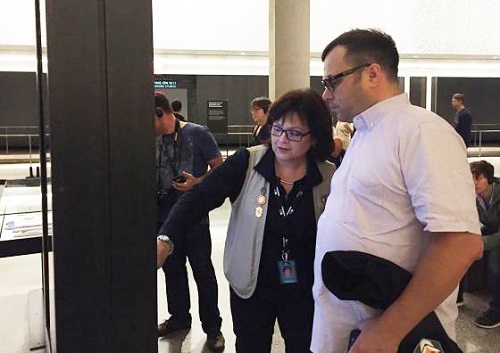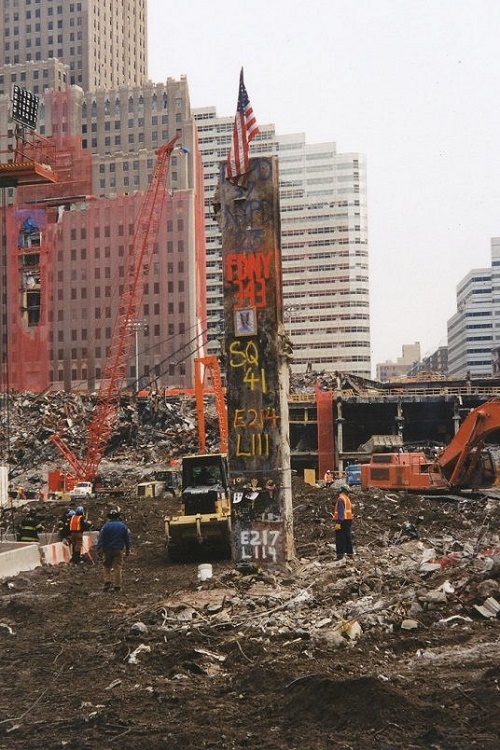Honoring Four Women of Ground Zero
Honoring Four Women of Ground Zero

On 9/11 and in the weeks and months following the attacks, an army of tens of thousands of firefighters, police officers, construction workers, search-and-rescue dogs, volunteers and more converged at the World Trade Center site to aid in search and rescue and ultimately recovery efforts at Ground Zero.
Women made significant contributions to every aspect of these efforts – from Kathy N. Mazza, Yamel Josefina Merino and Moira Ann Smith, who gave their lives to save others, to those who served around the site at places such as the morgue and family assistance centers. Among this diverse league of dedicated women involved in the rescue and recovery efforts, today we share but four, whose stories and experiences have been captured in the 9/11 Memorial Museum’s collection.
Pia Hofmann
Born in Germany, Pia Hofmann came to New York where she “started out as a dress designer and ended up astride a 100-ton crane” as an operating engineer with Local 14. In September 2001, Hofmann had just received her crane-operating license, and when she arrived at Ground Zero a week after the attacks, she was assigned to her own rig.
“Everything suddenly made sense,” Hofmann told the Chicago Tribune in 2002. “Being down there was the first time in my life I was sure I was in the right place at the right time."
During her eight months at Ground Zero, Hofmann worked demanding hours for a number of different companies, and at one point she only narrowly escaped a falling steel beam. Hofmann left a lasting impression on the people with whom she worked, and she had a reputation for speaking her mind. She is also remembered as “virtually the only woman operating a big rig at the site and had been just one of 12 people chosen to carry out the final, flag-draped stretcher during the nationally televised closing ceremony,” according to the Chicago Tribune.
Three of Hofmann’s badges and identification cards were donated to the Museum’s collection and are currently on display in the historical exhibition.

Brenda Berkman
Brenda Berkman was enrolled in her third year of law school when the New York City Fire Department announced that women could take the exam to become firefighters in 1978. After passing the written portion of the exam, Berkman and 89 other women subsequently failed the physical portion. It was stated by an official that their physical test was “the most difficult the department had ever administered, [and] was designed more to keep women out than to accurately assess job-related skills.” After Berkman’s requests for a fairer test were ignored, she filed an ultimately successful class-action lawsuit: Brenda Berkman, et al. v. The City of New York, which allowed for her and 40 other women to enter the fire academy in 1982. By the time she retired in 2006, she had become one of the highest-ranking women in the FDNY over her 25-year career.
On Sept. 11, Berkman operated as a fire officer, remaining at Ground Zero until the end of rescue and recovery efforts in May 2002. Berkman went on to tell CNN in 2011 that “September 11 made us all feel like we could never trust a sunny day again.”
Berkman has donated a multitude of objects to the 9/11 Memorial Museum collection, including her original artwork.

Sonia Agron
Sonia Agron waited until the morning of Sept. 12, 2001, to find out if her husband, NYPD officer Jose Agron, was alive. After finding out that he had in fact survived, Agron felt compelled to put her EMS training into action.
“The last message we got from him around 4 p.m. that day was that he was heading to 7 World Trade Center, which fell a short time later,” said Agron. “We waited until 10, 11 p.m. and at that point, had family all around us. We started to plan for the funeral, having seen that video of 7 WTC coming down over and over on the news.”
A lifelong resident of Bronx, Agron volunteered as a recovery worker on overnight shifts with the American Red Cross for weeks at Ground Zero after 9/11. “After 9/11, for those few weeks I had lost my trust in the world. I couldn’t look at anyone on the train. It was paranoia. But coming down here, it restored my faith in humanity,” Agron said.
Sonia now volunteers one day each week as a museum docent while her husband volunteers as a visitor services host.

Carol Orazem
Carol Orazem joined the New York Police Department in 1983 at a time when the department was predominately male. After working for seven years at Manhattan’s First precinct, Orazem eventually moved to the NYPD intelligence division in Brooklyn. On the evening of Sept. 10, Orazem was working undercover for a sting operation until the early morning hours of Sept. 11. As a result, she was asleep when Flight 11 struck the World Trade Center’s North Tower at 8:46 a.m.
She was soon dispatched to Liberty and West streets clad in her raid jacket and a pair of boots. Orazem remained at Ground Zero throughout Sept. 11 and into the morning of Sept. 12. After returning home, Orazem discarded her clothes from that day but kept her boots – the soles of which bear melted scars from the extreme heat conditions on site. Orazem retired from the NYPD in 2002.
Orazem donated her boots to the 9/11 Memorial Museum collection in 2014 when she told the Associated Press, “Now, at the museum, ‘I know that they're taken care of.’”

By Christine Murphy, External Affairs Project Coordinator, 9/11 Memorial & Museum
Previous Post
Class of Museum Ambassadors Graduates at the 9/11 Memorial Museum

A special graduation ceremony was held at the 9/11 Memorial Museum Tuesday evening for high school students honored as the fifth class to have completed the museum ambassador program.
Next Post
Coming Together Around the Last Column

Found in the disaster and destruction of Ground Zero was a 36-foot-tall piece of steel that was still anchored to bedrock. The piece of steel, later identified as part of the South Tower, stood apart from the rest of the columns found within the 16-acre site.